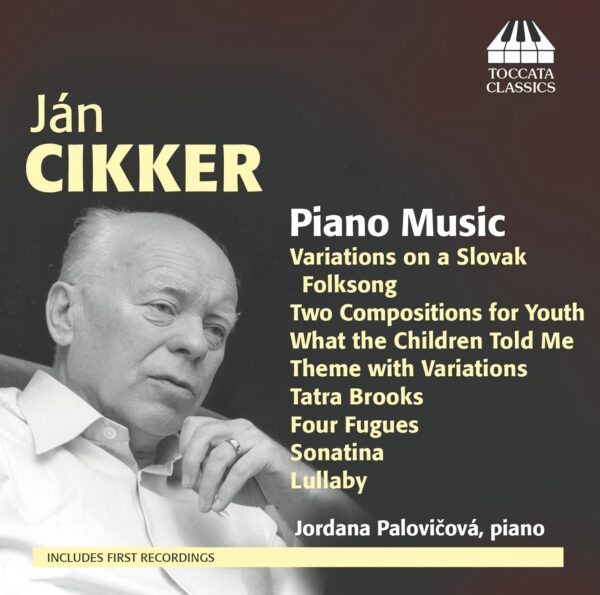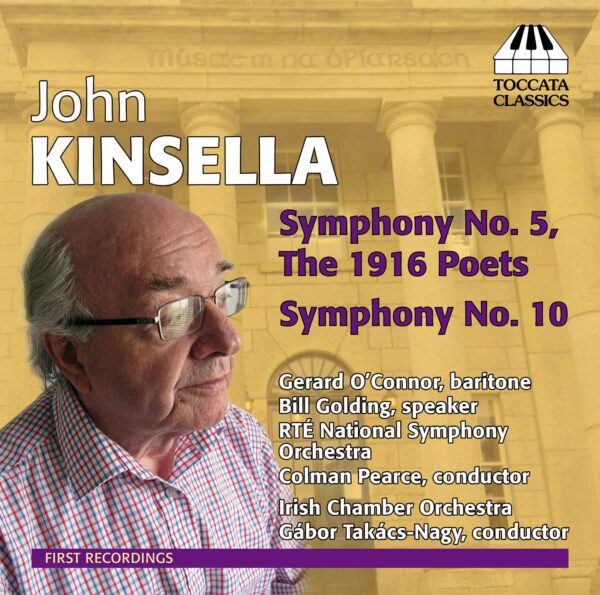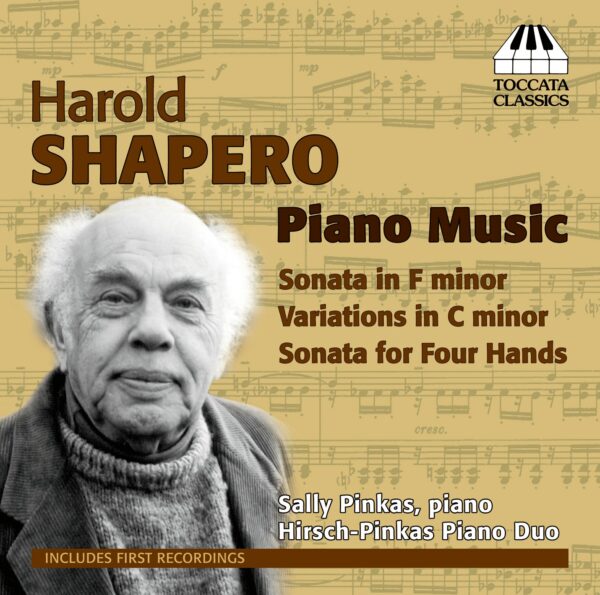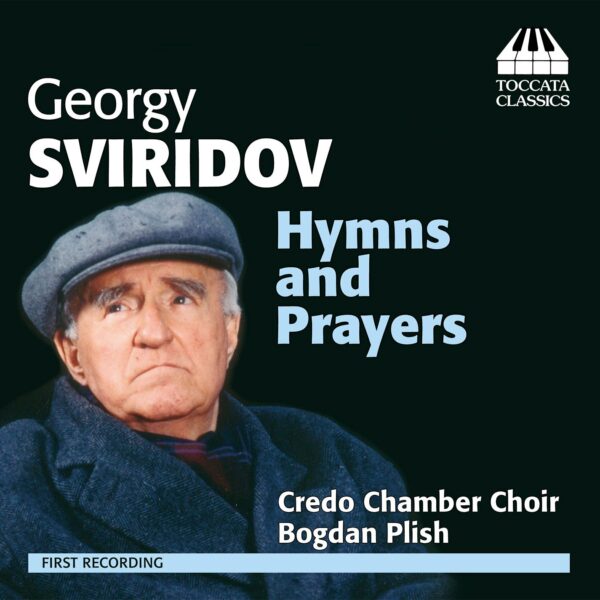Ján Cikker: Piano Music
Ján Cikker (1911-89) was one of the leading Slovak composers of the twentieth century, with no fewer than nine operas to his credit. Cikker was also a fluent pianist and his piano music — little known even in his native Slovakia (this disc features several first recordings) — sits downstream from Szymanowski and Janáček, similarly blending folk influences with an echo of French impressionism.
Jordana Palovičová, piano
Listen To This Recording:
- Lullaby (1942)
- I Allegro fresco
- II Andante sostenuto
- III Vivo
- I Mama’s Singing
- II The Little Virtuoso
- Molto moderato, improvvisando –
- Un poco più mosso, ma sempre moderato –
- Con moto, corrente –
- Moderato –
- Animando. Un poco con moto –
- Con moto moderato –
- Con moto moderato –
- Con moto. Moderato
- I Fuga 1, a 2 voci. Allegro vivo
- III Fuga III, a 3 voci. Largo sostenuto
- IV Fuga IV, a 3 voci. Andante sostenuto
- VI Fuga VI, a 2 voci. Andante
- Thema. Rubato quasi parlando –
- Var. 1: Più mossoo –
- Var. 2 –
- Var. 3: Allegretto grazioso –
- Var. 4: Poco allegro –
- Var. 5: Allegro strepitoso –
- Var. 6: Largo sostenuto –
- Var 7: Allegro gaio –
- Var. 8: Vivo –
- Var. 9: Vivo –
- Var. 10: Molto moderato –
- Var. 11: Presto –
- Var. 12: Rubato quasi parlando
- I A fairy tale, please
- II Catch me!
- III Why is the snow falling?
- IV What is a forest?
- V Dance with me
- VI Why are you crying?
- VII Where is the brook flowing?
- VIII What’s in the lonely castle?
- IX A bogeyman’s there
- X We saw a roe deer
- XI The train is moving!
- XII Why is the sky blue?
- XIII I let a butterfly go
- XIV Must everybody die?
- XV We’ve been to the circus
- I The Brook and the Breeze
- II What the Brook Told Me
- III The Brook and the Storm
Sonatina, Op. 12, No. 1 (1933)
Two Compositions for Youth, Op. 27 (1948)
Piano Variations on a Slovak Folksong (1973)
Seven Fugues: Nos. 1, 3, 4 and 6 (1932–34)
Theme with Variations, Op. 14, No. 1 (1935)
What the Children Told Me: Piano Aquarelles (1962)
Tatra Brooks: Three Studies for Piano (1954)





Classical-Modern Music Review :
‘…There are impressionist/post-impressionist elements at play on these works and you can (as the liners again note) discern the influence of Szymanowski and Janacek in the acid-etched dynamism and expressionism to be heard here. There are neo-classical elements here and there as well. …Many of the pieces call for a sensory-motor virtuosity, a scherzo-like playfulness and drive that Jordana Palovičová handles with surety. There is pulsating excitement alternating with a brittle lyricism that perhaps makes him recognizably specific to the modern realms current in his region. But he goes his own way nonetheless. There is much to appreciate here, from his take on modern neo-classicism in four of the ‘Seven Fugues’ of 1932-4 to the 1962 ‘What the Children Told Me’ and its highly dynamic, highly varied episodes. This is the sure touch of a composer of high merit.’
—Grego Applegate Edwards, Classical-Modern Music Review
MusicWeb International :
‘…The earliest works are the ‘prentice Fugues he wrote for Křička in Prague of which four of the surviving seven are presented. Appropriately we have a representative sample of two-part, three-part and one four-part fugue attesting to his Hindemith-like application. Around the same time he completed his Sonatina, Op.12 No.1, a fluent, clear, fresh example of his youthful ‘al fresco’ style. The Theme with Variations of 1935 is making its first appearance on disc and is a more complex piece, written just before he entered Novák’s advanced class in Prague It has a quasi-improvisatory theme and a series of brief but contrasting variations, variously pawky, brash and slightly obsessive before the music returns to the opening improvised aura. The wartime Lullaby, also a premiere recording, is a post-Chopin piece and very brief and the post-war Two Compositions for Youth are taut character studies of which the rippling second is the more engaging. Tatra Brooks may remind one, in name perhaps only, of Moyzes’ orchestral study of the River Vah, as it too delves into the rich topography of Slovakia. In Cikker’s case he looks further east, to the Tatra Mountains – he was a keen mountaineer. This is by some way the most enjoyable and invigorating music here, vivacious, post-impressionist, stormy and even turbulent. Cikker invokes colour and rhythm nicely throughout. The Aquarelles, What the Children Told Me (1962) are fifteen simple character pieces, a minute so in length, and pleasingly suggestive of forest, brook, and bogeyman. Finally there is the Piano Variations on a Slovak Folksong (1973) composed when he was a leading operatic composer. The theme and seven variations hearken back to the 1935 variations in form but the results are much livelier and more characterful. …Jordana Palovičová plays Cikker with style and sensitivity and it’s good that she has widened his piano representation on disc.’
—Jonathan Woolf, MusicWeb International
Fanfare Magazine :
‘It’s a rare treat these days to come across any music by the Slovak composer Ján Cikker (1911–1989). … Not the first time, a compositional voice well worth hearing has been lost to us due to a shifting political and economic climate. … The piano sonatina is a charming, deceptively light, thoroughly professional work from 1933, whose folk materials are thoroughly worked out in a manner that recalls Debussy to good effect. From 1935, the Theme with Variations was composed a year before Cikker began master classes in Prague with Vitězslav Novák. It was to become a favorite form of the composer, and not surprisingly, as his study of old forms left him with an ability to spin cogent variations out of small musical cells that an organist might admire. Of especial note are two: the wispy, chromatic Eighth, non-tonal but consonant, and the mysterious 10th, which could be considered a study in two-part chordal inversions in separate keys. From 1942 comes a simple Lullaby, a gift to a friend on the birth of his daughter, and from 1948, Two Compositions for Youth. The former is redolent of Chopin, while the latter (“Mama’s Singing,” and “The Little Virtuoso”) suggests some of the simpler, child-inspired compositions of Debussy and Fauré. … Inevitably, no single disc can do justice to Cikker’s tonal and expressive range, which in his operas could become harshly dissonant indeed. But the piano music on this album more than hints at his skill, and imaginative exploration of harmonic territory that lay outside the classical mainstream. It helps that in Jordana Palovičová, Cikker has a persuasive advocate. … Cikker’s music overall is richly rewarding, and I can only hope more of it eventually shows up. In the meantime, Toccata Classics and Jordana Palovičová should be thanked for providing a sampling of his music whose release was long overdue.’
—Barry Brenesal, Fanfare Magazine